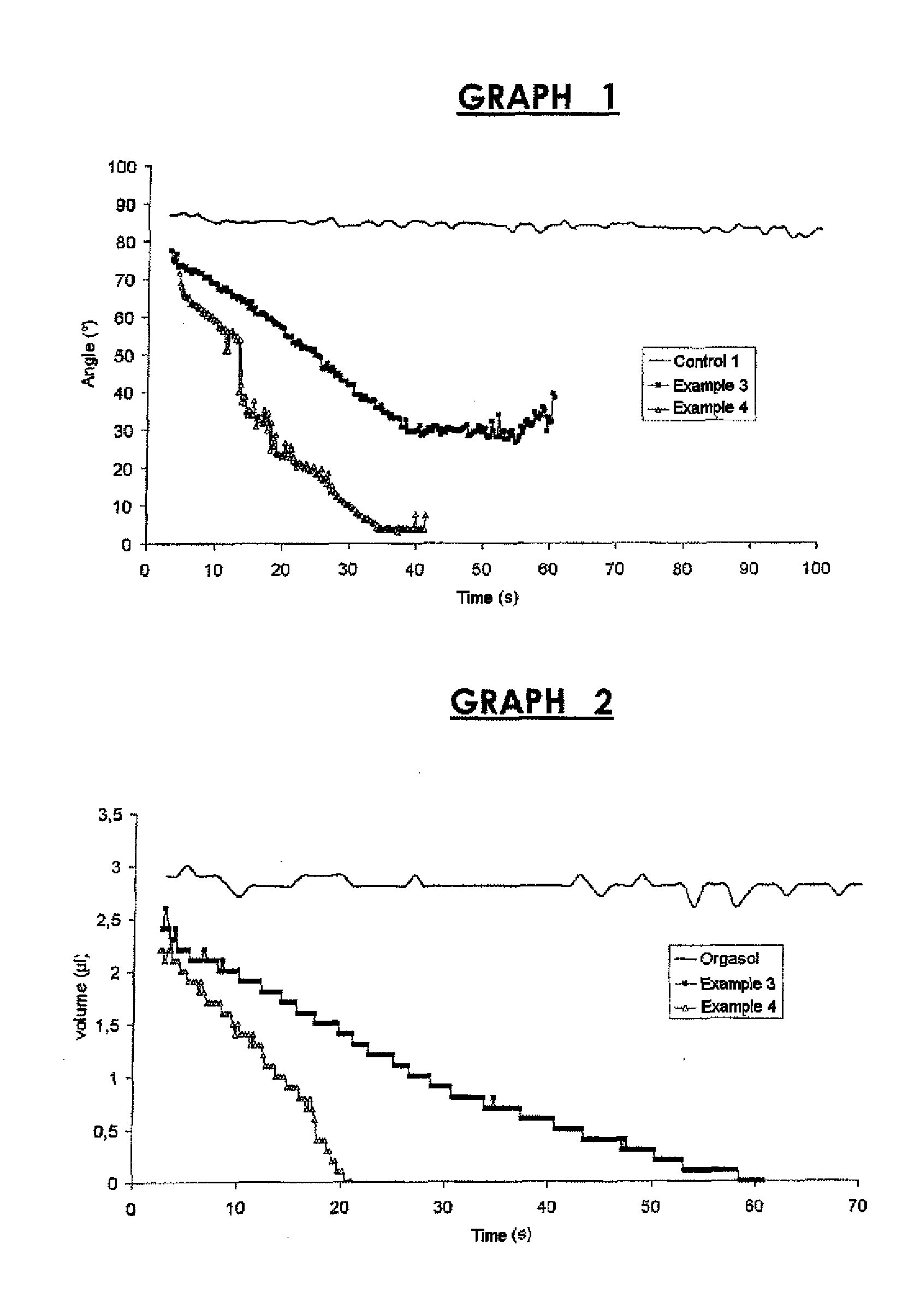Grafting onto a polyamide powder by gamma-irradiation
a polyamide powder and gamma-irradiation technology, applied in the field of powder particles, can solve problems such as non-uniform distribution, and achieve the effect of improving the adhesion of polymer
- Summary
- Abstract
- Description
- Claims
- Application Information
AI Technical Summary
Benefits of technology
Problems solved by technology
Method used
Image
Examples
example 2
[0117]50 g of a 0.8 wt % solution of methacrylic anhydride in cyclohexane was prepared. 99.6 g of polyamide powder P1 were then impregnated with this solution. The cyclohexane was then removed by vacuum drying. A powder containing 0.4 wt % methacrylic anhydride as grafting monomer was thus obtained.
[0118]The grafting was carried out according to the process described above. The powder impregnated with functionalized grafting monomer was placed in a sealed flask, in a nitrogen atmosphere. It was exposed to photon (γ) radiation with a dose of 50 kGray. A powder of grafted PA particles was thus obtained.
[0119]The grafted particle powders thus obtained (EXAMPLE 1 and EXAMPLE 2) were then tested below as additive in a UV-crosslinkable varnish formulation, and compared with the initial powder P1. To do this, the powders were dispersed with a content of 2 wt % in a varnish, the formulation of which is given in TABLE 1 below.
TABLE 1ComponentsNatureMass (g)CN 981 (Cray Valley)Aliphatic oligo...
PUM
| Property | Measurement | Unit |
|---|---|---|
| diameter | aaaaa | aaaaa |
| grain diameters | aaaaa | aaaaa |
| temperature | aaaaa | aaaaa |
Abstract
Description
Claims
Application Information
 Login to View More
Login to View More - R&D
- Intellectual Property
- Life Sciences
- Materials
- Tech Scout
- Unparalleled Data Quality
- Higher Quality Content
- 60% Fewer Hallucinations
Browse by: Latest US Patents, China's latest patents, Technical Efficacy Thesaurus, Application Domain, Technology Topic, Popular Technical Reports.
© 2025 PatSnap. All rights reserved.Legal|Privacy policy|Modern Slavery Act Transparency Statement|Sitemap|About US| Contact US: help@patsnap.com



